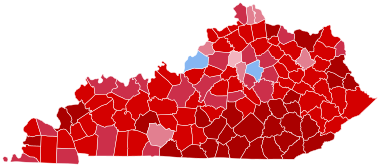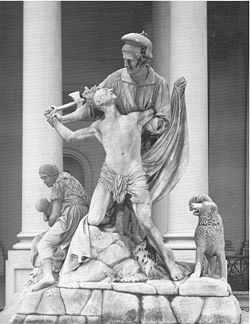We went to Connecticut and caught fish. It was our state number 30, but on the way to Connecticut we went to New York to the Wulff School of Flyfishing for a two-day casting clinic. We’d been to the Wulff School before, in 2019, and when we went we caught our New York fish in the Beaverkill. Before we took the trout class. The trout class includes things like “Knots You Can Tie” and “The Bugs We Like Best.” There was a lot of casting then, but this time it was all casting. A lot of casting. Then some more casting. And then we went out to the pond to cast.
I signed us up for the casting clinic for Kris’s January birthday because, unlike me, Kris’s fishing is limited by her casting. My fishing, on the other hand, is limited by my head. Maybe I’ve made some progress in my life-long battle against stupid, but that correction is more than I could hope for from a casting clinic.
Joan Wulff wrote the book on fly casting; one of the good books anyway. If you want to learn to cast a fly rod, get Joan’s book. Then go take some lessons because, while it’s great for review, learning to fly cast from a book just ain’t likely.

I do have problems with my cast. If you imagine a fly cast, there are two parts to it: there’s the back cast, where the fly line rolls out beautifully behind you. I can’t see it while I do it, but I’ve been told I have a great back cast. I suspect this is a little like being told you have a great butt, not that I recall ever being told I have a great butt, but if I were so told I’d be flattered. On a day-to day basis though, in and of itself, it’s generally not very useful.
The school’s founder, Joan Wulff, is a great caster. She won the National Fisherman’s Distance Fly title in 1951 with a cast of 131 feet. Between 1943 and 1960, she won 17 national titles–not the women’s title, mind, but the all of ’em, men-can-compete-too-if-they-can-just-keep-up title. In 1960 she took the New Jersey distance casting competition with a winning cast of 161 feet. That’s more than half a football field, and about 101 feet further than I can cast on a really good day. She was a pretty, petite woman in 1960, and that hasn’t changed.
Joan married Lee Wulff in 1967. Lee Wulff was the sort of famous angler who, as a kid back in the 60s, I watched on Sunday afternoon fishing shows after football was over. If you didn’t watch famous anglers on Sunday afternoon fishing shows back in the 60s, you really missed out–it was a lot better than football. Lee created a whole series of flies, the most famous being the Royal Wulff. it’s certainly as pretty as a fly can be. He popularized catch and release fishing. He died in an airplane crash in 1991.

In 2002, Joan married Ted Rogowski, a Cadwalader, Wickersham & Taft patent attorney, which, in the legal vernacular, is an elite lawyer at a white shoe law firm. He was a friend and fishing companion of Lee. He was a co-founder of the Theodore Gordon Flyfishers in New York, and, according to the patent lawyer board member I talked to at the Beaverkill Valley Inn (they were there for their annual dinner), Rogowski was an author of the Clean Water Act and one of the folk responsible for founding the EPA. At 93 he was featured on the cover of Fly Tyer magazine with his article “A Better Way to Tie Mayfly Wings.” It’s a good article, though not having tied a lot of mayfly wings, I can’t vouch for it being better.
Rogowski also represented Ted Williams during Williams’s Sears days. The guy knew Ted Williams.

Joan is now 95. She was around for most of our class and made sure the instructors remembered everything. There were four instructors,** and Kris and I had met all of them before–there’s a lot of consistency at the Wulff School. We had caught our New York fish with Craig Buckbee on the Beaverkill. He seemed happy enough to see us. He must not have remembered my casting.
Anyway, there are two parts to the cast, the back cast where the line rolls out beautifully behind you, and then the forward cast where the line rolls out beautifully in front of you. To each of the back cast and the forward cast, there are three parts to create that roll: the loading move, the power snap, and the follow-through. The instructors drill this in the class, explain it, demonstrate it, hold your hand to show you how it feels, yell it across the pond, and whisper it in your ear while you sleep.

What’s great at the school is the consistency of the message. They’ve been teaching the same thing over and over and over for 40 years, and there’s real value in that consistency. If anybody deviates, Joan’s there to pull them back into line.
And the casting instruction works. At least it works if you can do it: there’s no magic cure for ineptitude. My problem is that I’ve got this cute butt on the backside and a mess on the front. There’s the loading move, the power snap, and the drift that perfectly rolls out the line behind me, and then on the forward cast I skip the loading move and move straight to the power. Wham.

It’s not that maybe 70% of the time through long adjustment to bad habits I can’t get the line to go more or less where I want it to go. I can cast well enough using my sloppy ways to catch fish and maybe even fool some people some of the time, but it’s not good. About every fifth or sixth cast my line is going to cross itself (there’s a name for what happens, a tailing loop), and the line is going to puddle 30 feet out and tie itself into knots. It’s ugly. It’s inefficient. It’s frustrating. It’s all my fault.

It’s what I’ve learned. I know it, my muscles remember it, and I don’t know if I’ll ever get over it. It’s certainly mild as bad habits go, a lot milder than stupid, but it’s a mess.
Sometimes I just cast backwards. I’ve got a really cute butt.

** Sheila Hassan from Boston, Mark Wilde from Vermont, Dennis Charney from State College, Pa., and Craig Buckbee from Livingston Manor, New York. These are great people. Each of them separately guides and gives casting lessons, and Dennis is associated with a fly shop we visited in State College, Pennsylvania. State College is mostly known for its fly fishing and its ice cream.



















